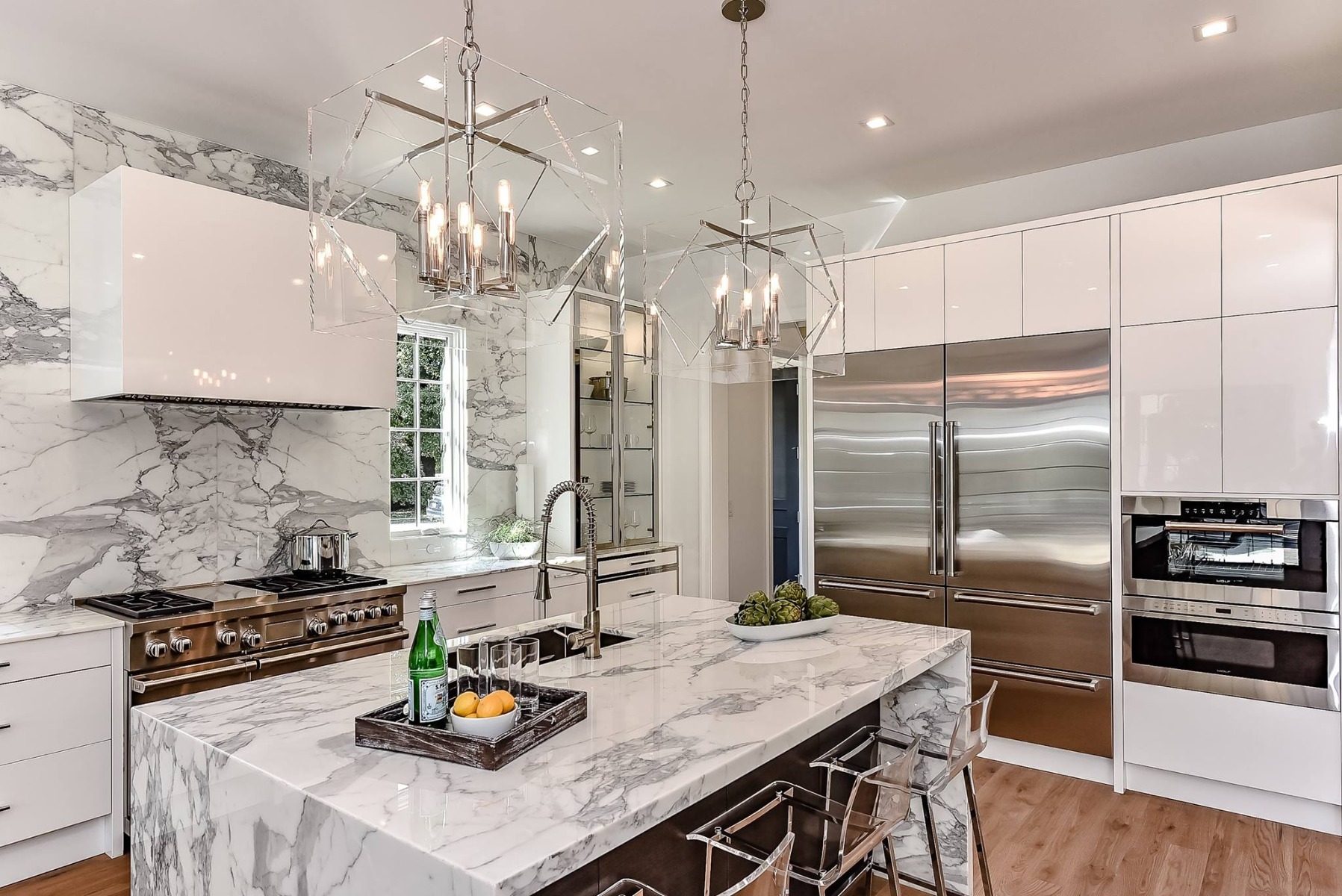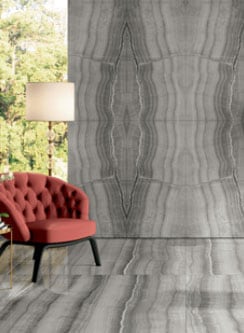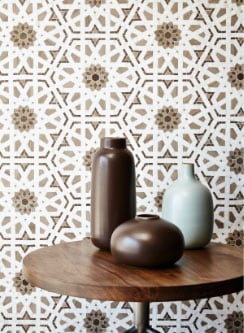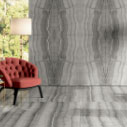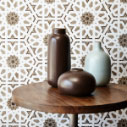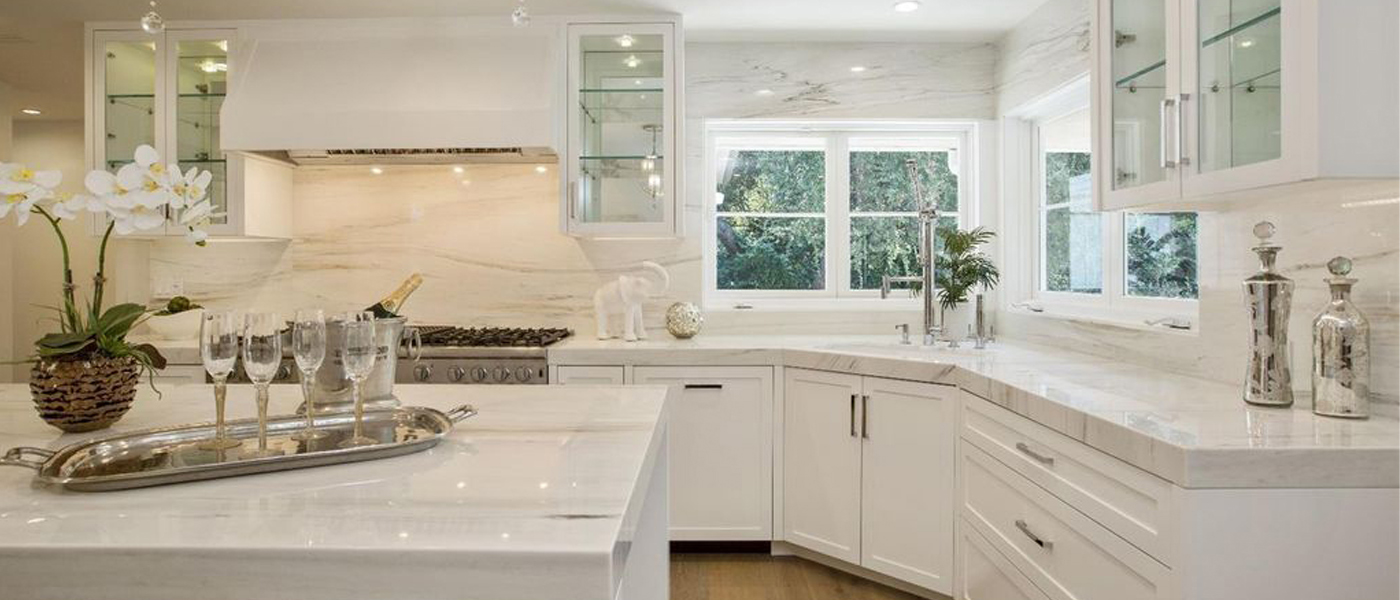
When it comes to kitchen backsplashes, people tend to fall into two camps: subway tile devotees and everyone else.
After all, it’s hard to argue with fans of the ubiquitous 3×6 tiles that line New York City subway stops: it’s a failsafe backsplash. There’s a myriad of reasons for subway tile’s 100-year-plus reign as a tried-and-true kitchen classic. It will never go out of style. It’s budget-friendly. It’s remarkably versatile, a style chameleon that easily fits traditional to modern decor. It’s also easy to clean, which is an important consideration given people’s rising hygiene concerns.
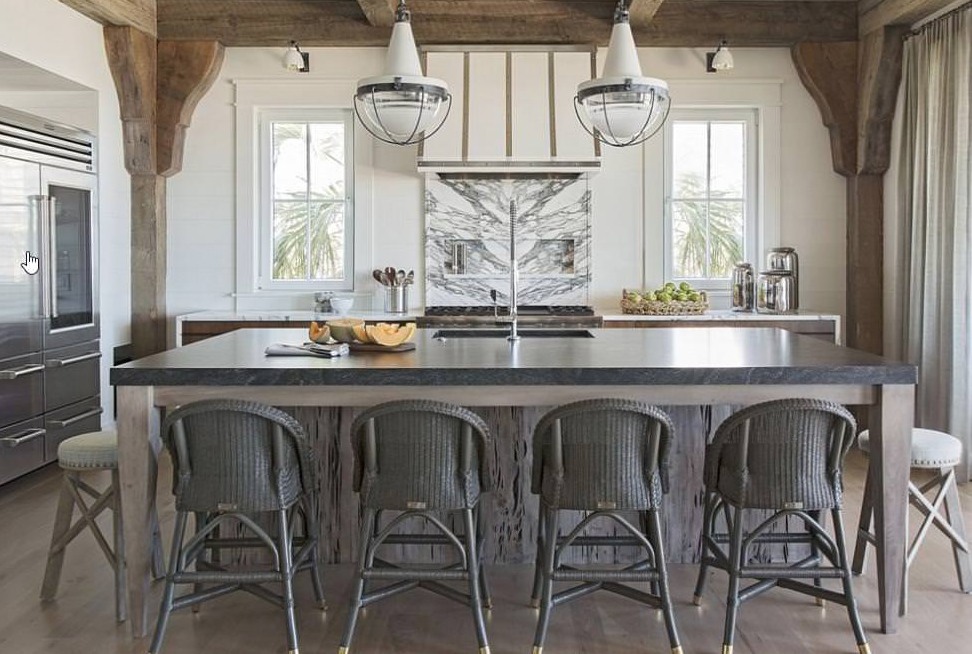
Yet for all of subway tile’s many benefits, some designers are starting to mix up their backsplashes. If you find yourself scouring Instagram and Pinterest for inspiration lately, you may have picked up on a new stone trend in the kitchen design world: slab backsplashes. Carrying the slab of a countertop up the walls brings a clean look into the kitchen while also adding major drama.
It’s modern. It’s timeless. It’s also beautiful.
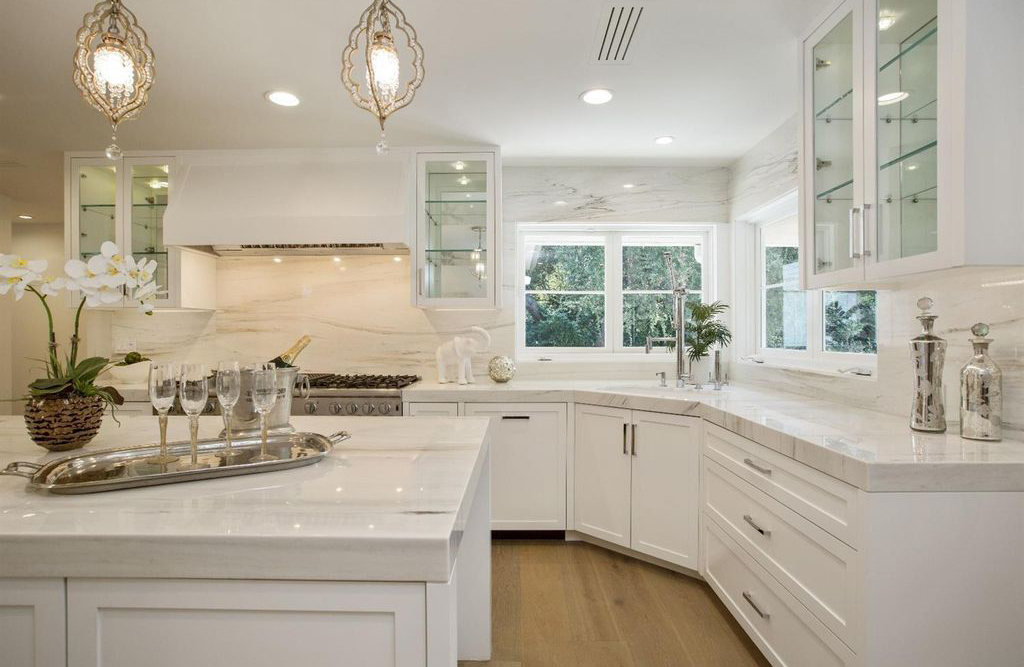
In terms of slab materials, natural stone is having a renaissance at the moment, especially varieties with major veining and unexpected hues like Calacatta, Violeta, and Arabescato. But subtler stones like Carrera, pack a decorative punch, too. Walker Zanger carries a stunning selection of Marble and Quartzite slabs that are popular with designers.
While it’s tempting to assume streamlined slabs are for contemporary aesthetics only, think again. Designers are using them in a variety of settings, from timelessly glam spaces to chic rustic farmhouses. Charleston, S.C.-based designer Tammy Connor recently told us that she likes using full natural stone slabs as backsplash in her traditional Southern kitchens because “it looks like it’s been there forever.”
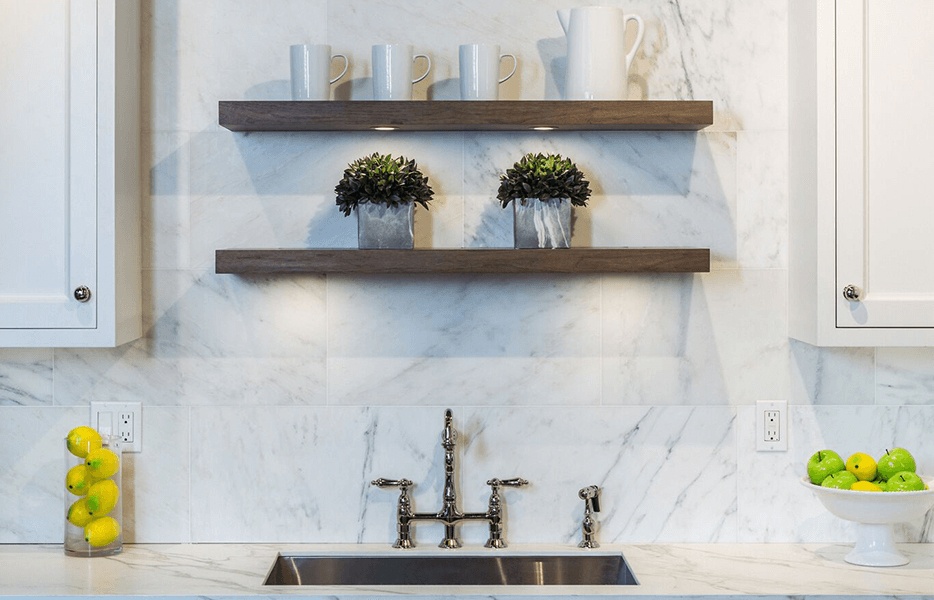
Of course, one of the major perks of a slab backsplash is its lack of grout lines. A continuous, seamless slab ensures less dirt or food particles building up on the surface, and in turn, lessening the need for heavy-duty cleaning. That said, you may need to factor in some level of upkeep into the equation depending on the type of stone or material you choose for your backsplash. If you select something porous like marble, for example, you might want to go with a polished stone versus a honed one, which is shinier and less likely to absorb splatters.
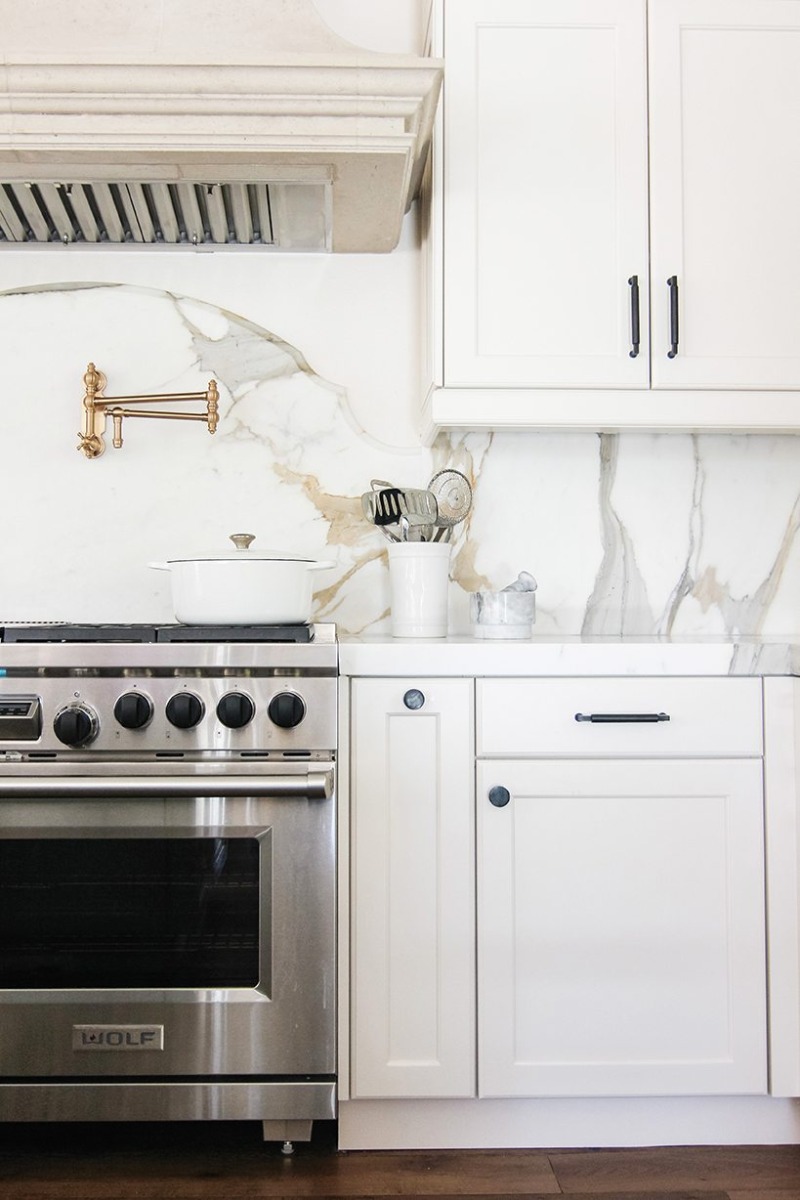
If you’re worried about the upkeep of natural stone, porcelain slabs are a genius alternative. Thinner than traditional stone slabs, Walker Zanger’s Secolo porcelain slabs still have the look of marble veining combined with the everyday ease of porcelain.
If you’re worried that adding even more stone surfaces to a project will inflate costs, there are several ways to keep costs down. You can let the slab fade into a ledge or an open shelf. Another option is placing a slab behind your cook-top only.
For those homeowners and designers who want a cleaner, fresher look for their kitchen projects, slabs are a worthy splurge.
